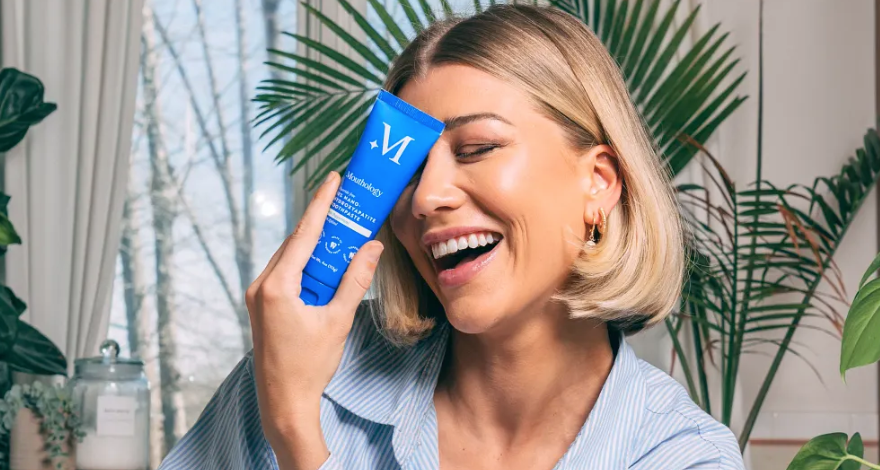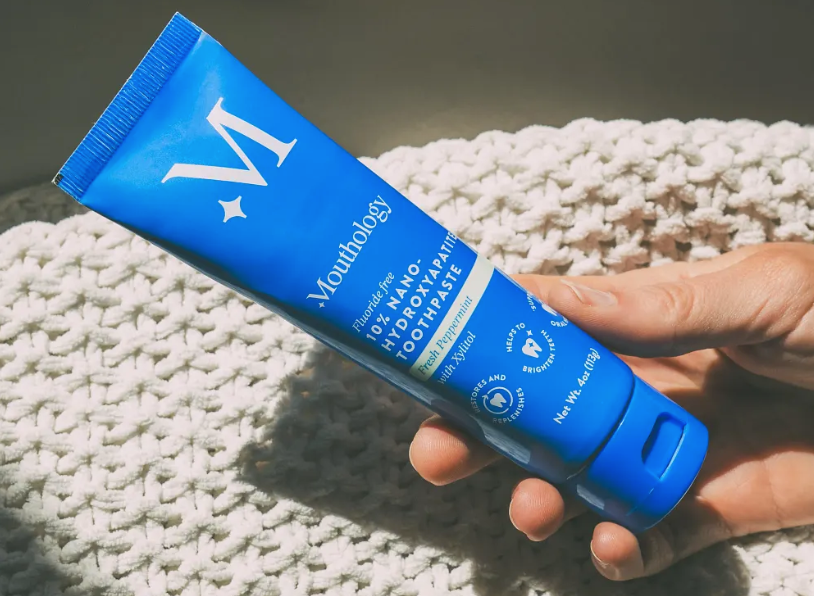Have you done a switch to fluoride-free toothpaste and wondered if it's safe to swallow? With the increasing popularity of fluoride-free dental products, many are curious about their impact on oral health. This shift often comes with concerns, especially when considering children’s toothpaste. Are these toothpaste options truly safe if swallowed?
Dentists often get asked about the safest toothpaste available for both children and adults. Brushing your teeth is an essential daily habit, and knowing whether to use fluoride-free toothpaste can make a significant difference.
Read on to discover everything you need to know about making an informed decision for your dental routine and ensuring the well-being of all ages.
What is Fluoride and Why Swallowing It May Be Harmful?
Fluoride is a natural mineral found in various sources, including water and soil. It's widely recognized for its ability to strengthen enamel, the outer layer of teeth, and reduce the risk of cavities.
However, ingesting too much fluoride, especially from toothpaste that contains fluoride, can lead to a condition known as fluorosis. This occurs when the amount of fluoride ingested exceeds the recommended levels, causing discoloration and damage to the enamel.
While fluoride can cause gum irritation and even fluoride poisoning in severe cases, it's essential to monitor the concentration of fluoride in dental products. For those concerned about excessive fluoride, alternatives to fluoride toothpaste are available, such as fluoride-free options. If accidental ingestion occurs, contacting poison control is advised.
When comparing fluoride vs. fluoride-free products, understanding both benefits and potential risks helps in making an educated choice for your dental health.
What Will Happen if You Swallow Fluoride Toothpaste?
Now, to give light on what happens when you accidentally swallow fluoride toothpaste, especially in children under the age, it's crucial to consider the amount of toothpaste used.
Brushing your child's teeth with too much toothpaste can lead to swallowing too much fluoride, increasing the risk of tooth enamel damage and tooth decay. Using training toothpaste or fluoride-free options can help minimize the risk of swallowing excessive amounts of fluoride.
If a child swallows toothpaste regularly and in large quantities, it could potentially lead to acute fluoride toxicity. Immediate symptoms might emerge, and it is important for parents to be aware of them to ensure the well-being of their children.
In case of such an event, contacting the poison control center, such as the national capital poison center, is imperative.
Common Symptoms of Swallowing Too Much Fluoride Toothpaste:
- Nausea
- Vomiting
- Abdominal pain
- Diarrhea
- Periostitis (inflammation of the tissue around your bones)
To ensure our content is accurate and useful, these symptoms underline the importance of supervising children's dental hygiene habits, using an appropriate amount of toothpaste, and making informed choices about dental products.
Can Kids Safely Swallow Fluoride Free Toothpaste?
Since fluoride-free toothpaste contains no fluoride, there is no risk of overdose. However, it's essential to examine the remaining ingredients to determine how healthy a toothpaste is for your child. Many parents now opt for pastes with all-natural ingredients they recognize.
According to the American Academy of Pediatrics, children ages 3 to 6 should use a pea-sized amount of toothpaste, as they tend to swallow extra toothpaste while brushing. This is especially true for younger children, particularly children under age 6.
Fluoride-free pastes are okay for children to swallow and form an essential part of an oral health routine. Ensuring healthy teeth from a young age can prevent caries in primary teeth and set a strong foundation for lifelong dental health.
Related article: 10 Surprising Fluoride-Free Toothpaste Benefits
How to Choose the Right Toothpaste for You and Your Family?
To help you make the best choice for your family, here's a simple guide:
Check the Label
When selecting toothpaste for your family, always check the label to understand its ingredients. This simple step ensures you're aware of what you're putting in your mouth. Find out if the toothpaste contains fluoride, as it is key in maintaining good dental hygiene and helps to prevent cavities.
However, if you prefer to use fluoride-free options, make sure you’re informed about what replaces it. Look out for natural ingredients, but be cautious about abrasive substances, which might harm teeth enamel.
Make Sure the Toothpaste Contains Fluoride
If you decide to use fluoride toothpaste, it's essential to acknowledge fluoride’s role in strengthening your teeth and gums, especially in preventing cavities.
Always use the recommended amount of toothpaste: a pea-sized amount for children and adults, and the size of a grain of rice for toddlers when they get their first tooth. Brushing your child's teeth with the right amount ensures effective cleaning while minimizing any risk.
Find the ADA Seal of Acceptance
Another critical element in choosing the right toothpaste is looking for the American Dental Association (ADA) Seal of Acceptance. This seal guarantees that the toothpaste has been evaluated for safety and efficacy.
An ADA-approved paste, whether it’s fluoride toothpaste or fluoride-free, means it meets high standards and is safe for dental health.
Look for Abrasive Ingredients
It’s crucial to identify and avoid abrasive ingredients in toothpaste. Abrasive substances can wear down enamel, leading to sensitivity and other dental issues.
Check for ingredients like sodium lauryl sulfate and other chemicals, which might be too harsh for daily use. Selecting the right kind of toothpaste, suitable for daily brushing without causing harm, supports overall oral hygiene.
Pick the Best Brand for You
The market is saturated with various kinds of toothpaste, so picking the best brand can be difficult. Balancing effectiveness and gentleness is key, so look for brands that offer both. We’ll separate fact from fiction to help guide your choice, ensuring you use toothpaste that meets your needs.
Whether you opt for fluoride to prevent cavities or choose to use fluoride-free for peace of mind, make an informed decision for the benefit of your dental health.
Fluoride vs. Fluoride-Free Toothpaste - What's the Verdict?
With many options available, selecting the right toothpaste necessitates an understanding of your family's dental needs. For adult teeth, foaming toothpaste with fluoride is often recommended due to its cavity-fighting properties.
However, it's crucial to use the toothpaste without exceeding the recommended amount to avoid adverse effects. The benefits of fluoride in maintaining strong, healthy teeth are significant, and fluoridated water can complement this daily routine.
For babies and toddlers, start with a grain of rice-sized amount, and for children and adults, a pea-sized amount is ideal.
If you're in doubt, always ask your dentist for recommendations based on your specific oral health needs.

